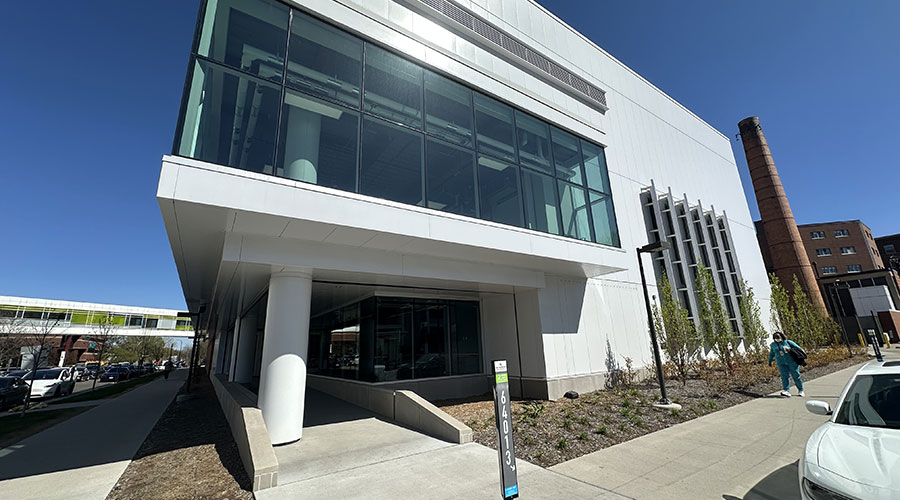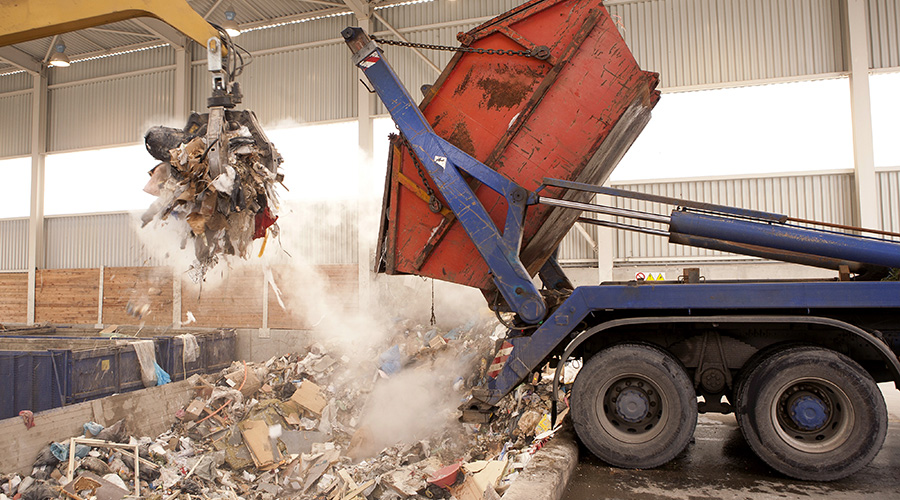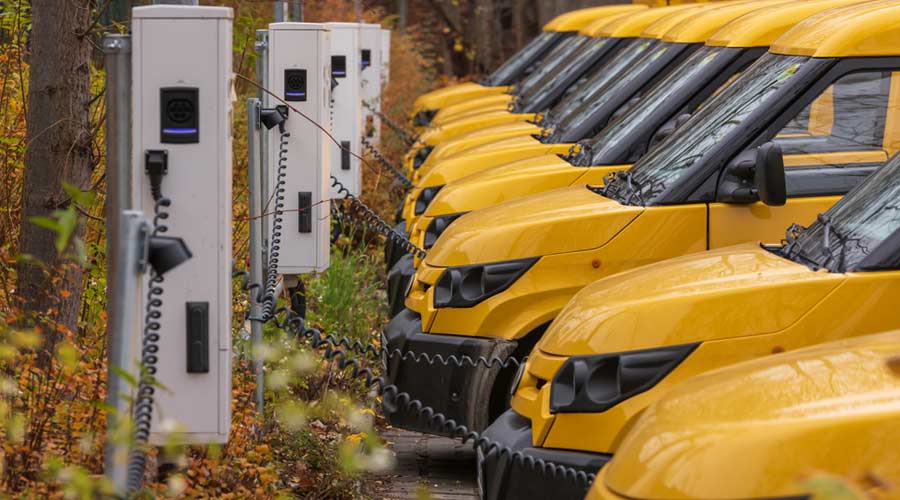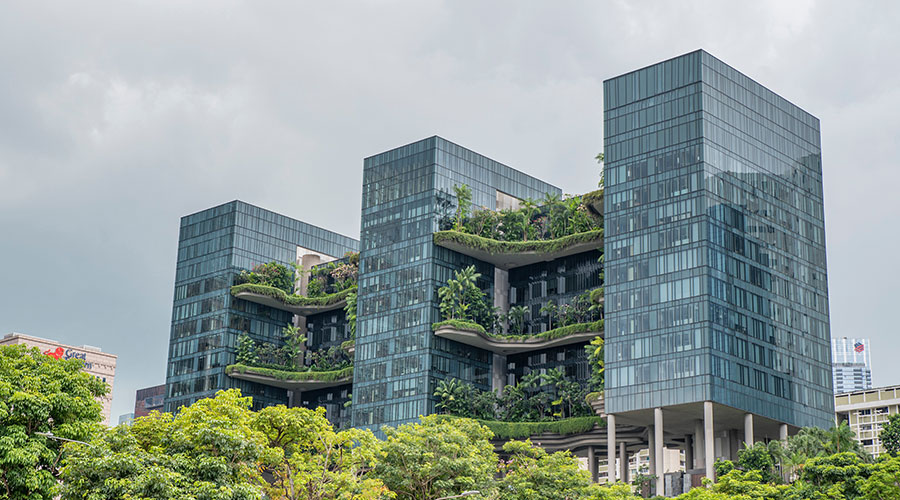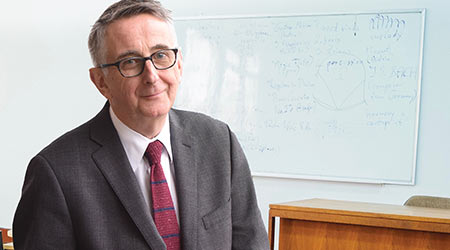 John Chadwick, assistant superintendent, facilities and operations, Arlington Public SchoolsPure Light Images / Laurie Dewitt
John Chadwick, assistant superintendent, facilities and operations, Arlington Public SchoolsPure Light Images / Laurie DewittGrowing Up Green: How One FM Incorporates Sustainability in Growth
At Arlington (Va.) Public Schools, John Chadwick accommodates growing enrollment by incorporating sustainability in both buildings and in the classroom.
John Chadwick is quickly running out of space. And there’s nowhere to go but up. Chadwick is the assistant superintendent for facilities and operations for Arlington Public Schools (APS), located in densely populated, affluent suburban Washington, D.C. Enrollment in the public school district is growing rapidly – by about 1,000 students per year for the last 10 years. That’s a lot to absorb for a school district with a projected enrollment pre-K through 12 of 28,000 for the 2018-19 school year.
The issue is that county is almost literally out of buildable land. Wedged between the Potomac River to the north and east, Fairfax County to the west, and the city of Alexandria to the south, Arlington County comprises 26.2 square miles, making it the smallest self-governing county in the country. “We can’t just buy land,” says Chadwick. What little land is available is astronomically expensive. Chadwick cites a recent land purchase the county made: About 3.5 acres of land for $23.86 million.
So expanding upward not outward and finding ways to repurpose existing space to add seats (“seats” is Arlington’s way of referring to student capacity – equivalent to “beds” in a hospital) is the order of the day for Chadwick. Chadwick says it’s his biggest facilities challenge and also the most interesting work he does. “How do you find sites for schools in a fully developed community? How do you develop new schools and accommodate growing enrollment with no space?”
As well, with one eye on a deliberate and thoughtful expansion plan to continue adding seats to schools’ capacities, Chadwick is also intensely focused on how to make both new and existing buildings more energy efficient and sustainable. He steers sustainability in a variety of different ways: From focusing on energy and waste reduction to onsite renewable energy and solar power purchasing agreements.
The biggest sustainable success to date is a new building. Arlington Public Schools proudly claims the largest net zero energy public school in the country – the nearly 100,000-square-foot Discovery Elementary School, finished in 2015.
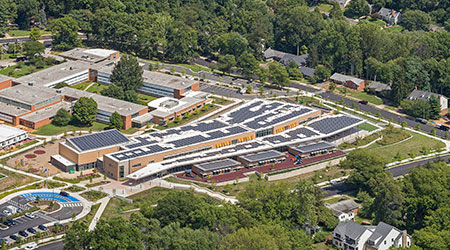
(Discovery Elementary School, which operates at an EUI of 15.8, uses a rooftop PV array to offset its annual energy spend. It is the largest net zero energy school in the U.S. Photo credit: Digital Imaging and Design)
But for Chadwick specifically and the district at large, sustainability and energy efficiency are more than just a facilities mission. The school district’s buildings have become learning laboratories, as committees of students, administrators, and teachers have developed curriculum around many of the sustainability facets of the buildings. From dashboards that display the energy generated from solar panels, to lessons in urban farming and gardening, the school system has implemented experiential learning in sustainability system-wide, and these are now as much a part of the school day learning experience as trigonometry and To Kill A Mockingbird.
“The idea of caring about the environment permeates the whole school,” says Erin Russo, principal at Discovery Elementary School. “It’s a theme that is prevalent and authentic to a child’s life. It’s so much more engaging, when you make it relevant, and that’s what’s happening here.”
So Chadwick’s challenge is applying lessons learned in sustainability and experiential learning at Discovery Elementary throughout the district, all the while looking for cost-effective and space-efficient ways to increase seats. They’re priorities that aren’t always complementary. And Arlington Public Schools is home to a community that is particularly engaged, says Chadwick. That’s both a blessing and a curse. There are lots of strong opinions, but also lots of good ideas. So part of Chadwick’s charge is synthesizing all these ideas and priorities into coherent, practical strategies that help buildings complement learning.
Expanding seats
Crowded classrooms are far less than ideal. So Chadwick and APS have been as proactive as possible about trying to deal with the growing enrollment. In March 2018, the district published a document titled “A Plan For Growing Enrollment at APS.” The document combines APS’s long-term capital improvement plan looking out to 2028 with its Arlington Facilities and Student Accommodation Plan. This document lays out the many new construction projects (including another net-zero energy school scheduled to open fall 2019) and school renovations and repurposing projects that have been in the works for several years. In 2017, enrollment was at the highest level in the school district’s history, and enrollment, especially in elementary schools, is forecast to continue to grow quickly, so an all-hands-on-deck approach to facilities is what’s needed, says Chadwick. That includes continuing with past plans to build and expand, but also looking at existing buildings for opportunities.
As is the case at many public school districts across the country, the current building stock at APS — which includes 23 elementary schools, five middle schools, four high schools, and a smattering of other spaces totaling about 5 million square feet – is aging. “All our schools were built in different periods, many added to over time,” says Chadwick. That makes trying to expand individual schools further even more challenging, architecturally and engineering-wise. And what’s more, there is no swing space in the district right now – every square foot of building is in use. So it’s not really possible to take a building out of service for a year-long renovation or expansion.
This means Chadwick has to get creative. As one recent example, he led a project to demolish a single-story section of a 10-year-old building to replace it with a four-story section. The goals for this particular project were two-fold: First, to expand seats. Second, by building up instead of out, they were able to preserve some of the open green space around the school. “It’s not particularly sustainable to demolish a 10-year-old building,” he says. “But on the other hand, it was the wrong building. So why keep using a bad idea?” This isn’t just a one-off occurrence. “We will end up replacing a number of sprawling single-story buildings with denser buildings,” says Chadwick. “But right now, we don't have any swing space, and we need all the seats.” That’s why the long-term strategic capital plan is of utmost importance — to carefully replace buildings in a systematic and smart process, ensuring that growth is accommodated, but not at the cost of short-term overcrowded classrooms.
Related Topics:






